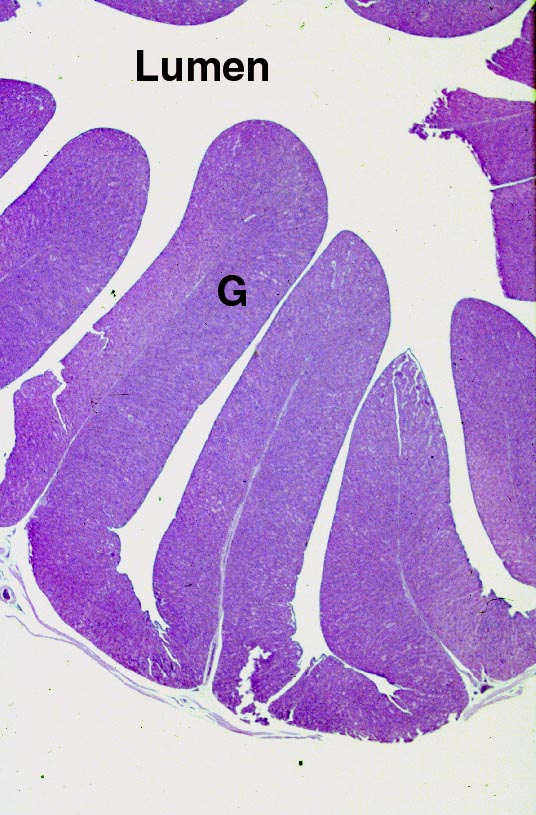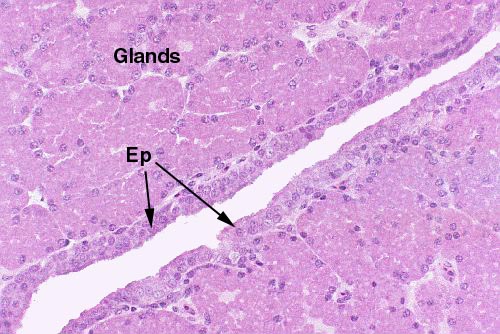 This field shows only about half the magnum because it's so large even
at the lowest power I couldn't get it all in one view.
This field shows only about half the magnum because it's so large even
at the lowest power I couldn't get it all in one view.
Author: Dr. Thomas Caceci

The lumen is extremely patent, and there are deep clefts or crypts. Obviously this organ is designed for distensibility. The uniform basophilic staining of the submucosa is due to the glands located there. This portion of the oviduct makes the albumen coat, so its protein-synthesis capability is extremely well developed.
On occasion, two eggs are released from the ovary in quick succession, and travel down the tube together. When this happens, both will pass through the magnum more or less simultaneously and be wrapped in a single covering of albumen. That's what's known as a "double-yolker." You can spot these eggs in a pile pretty easily: they're considerably elongated compared to the proportions of a single-yolk egg.

At high magnification both the lining epithelium and the underlying albumen glands in the submucosa are visible. The epithelium is stratified cuboidal to columnar. The massive glands are strongly basophilic because of their role in protein secretion for export; each of these cells is packed with rough endoplasmic reticulum.
Oviduct, chicken; H&E stain, paraffin sections, 20x and 400x